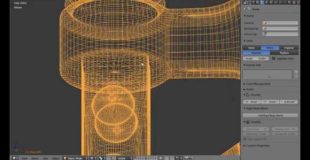https://i.ytimg.com/vi/FGiTVY9gSko/hqdefault.jpg
In this overview Chris Plush from cgmasters.net shows you some tips on prepping your 3D models in order to upload them to i.materialise.com for 3D printing.
Here are some more tutorials and how-tos on our blog:
Creating a Chess Piece in Blender https://i.materialise.com/blog/tutorial-creating-a-simple-chess-piece-in-blender/
5 Mistakes to Avoid When Designing a 3D Model for 3D Printing https://i.materialise.com/blog/5-mistakes-to-avoid-when-designing-a-3d-model-for-3d-printing/
5 Essential 3D Modeling Tips for 3D Printed Jewelry https://i.materialise.com/blog/3d-modeling-tips-for-3d-printed-jewelry/
Facebook: https://www.facebook.com/i.materialise
Twitter: https://twitter.com/imaterialise
Instagram: https://www.instagram.com/imaterialise/
source

12 responses to “Tutorial: How to Prepare Blender Files for 3D Printing”
100 mb max for every printer?
Thx for the tutorial its great
wrote a whole long thing and erased just to say blender is a horrible environment. I'm sure it will appeal to some, but the logic of things is way off and weird.
Is it really necessary to make it a single object in Blender? I've printed models I've made in an old version of Lightwave that were created from simply overlapping different objects with no joining or booleans for the most part and exporting them to STLs, DAE, or OBJ files. I check that they are watertight and such, but I haven't had any issue with this method unless there are any gaps between objects that should be overlapping.
This allows for more easy editing of the model later should changes be needed without having to go back to a prior iteration.
terrific thanks
Nice thanks!
Let me ask. If I use particles to add a bunch of meshes to a cylinder, think water drops on a coke can, can I turn that into a solid printable object?
so you printed this in Silver, Not plastic? or Just painted with a Silver Color?
How much does it cost to print something of that size?
…would LOVE to see you make these !
Really helpfull video…TNX… it would be even better if you'd add the Keyboard operations in the video…!!!… making it much easier to follow… TY again…
how much did it cost you to print them?
A useful and clear explanation, thank you.